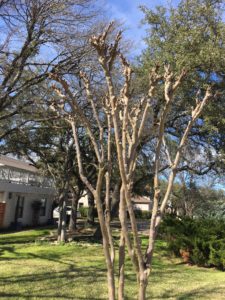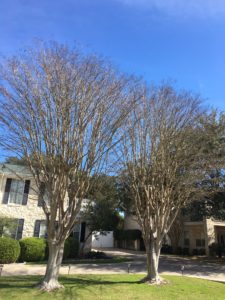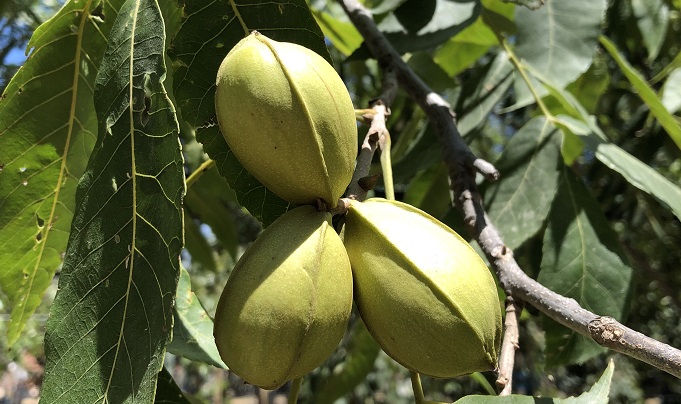Most of you have heard the process of pruning Crape Myrtles back to “nubs” referred to as “Crape Murder”. But you may not know how this practice originated. I’d like to offer my “take” on the subject and some reasonable solutions to a practice that deforms and subjects these beautiful trees to unnecessary stress.

Many years ago, we did not have the variety of Crape Myrtles available that breeders now offer. Until the first breeding programs began in the 1960’s, we had only Lagerstroemia indica and Lagerstroemia fauriei, both tall-growing species, available for planting in our landscapes. These tall varieties were often planted too close to structures or in areas where their mature size would not fit and were often “pruned” to fit the location.
We now have such a variety of mature sizes and colors available to us that this rationale is no longer an excuse to prune these majestic beauties as they were decades ago. But old habits die hard. I have heard excuses such as “pruning produces prolific new growth, thus more flowers”. In fact, this heavy pruning DOES produce prolific new growth which is more susceptible to wind or ice damage due to thin branches with narrow crotches. Often these weak branches cannot support the weight of heavy flowers, especially when wet. Additionally, a normally sculpturally shaped tree ends up looking like a “poor pitiful Pearl” tree in the landscape in winter!
Although pruning back to “knobs” each winter , known as “pollarding”, has had a legitimate purpose in history with specific species of trees, the original purpose of “pollarding” was to produce prolific growth annually to be used as fuel or shelter. We are fortunate that the Crape Myrtle is one of the few trees that will tolerate “pollarding” as long as it is always cut to the “knobs” each year. That does not mean you SHOULD prune them in this method!
If you have a tree that has been pruned in this manner and its branches are less than 3” in diameter, you CAN return the tree to its original form. Choose the single strongest upright branch produced and remove all others. If the tree has trunks larger than 3” in diameter, it should be cut to the ground, and trained to grow properly when new trunks emerge. Choose 3-5 of the strongest, well-spaced trunks, remove suckers as they appear, and prune in the future only to remove rubbing or crossing branches or narrow crotches. Fine pruning would be removing small twigs, dead wood and old seed heads. A tree with an “open” center improves air circulation and reduces the chances of powdery mildew and overwintering insects.

Finally, do not confuse the age-old practice of “pollarding”, in which the tree has begun to be trained when young and sprouts are removed annually from the “knobs” or “knuckle” during the dormant season with the totally inappropriate technique of “topping”. “Topping” is cutting the tree back to a pre-determined point to limit height, and can lead to dieback, decay and unstable branch production.
Prune Crape Myrtles to:
*remove small twigs and dead limbs first.
*open the center to light and air circulation by removing crossed and rubbing branches.
*give the tree a natural majestic look, maintaining its natural form.
To avoid the temptation to “murder” your Crape Myrtles, give some thought to what mature size Crape Myrtle will be appropriate for the location you choose to plant it in, and your tree will naturally grow to fit the spot!
Finally, the BEST time to prune a Crape Myrtle, should it need pruning, is in LATE FEBRUARY.





Leave A Comment